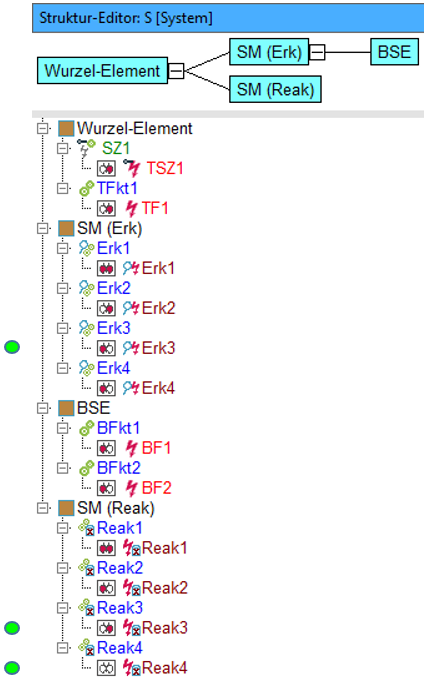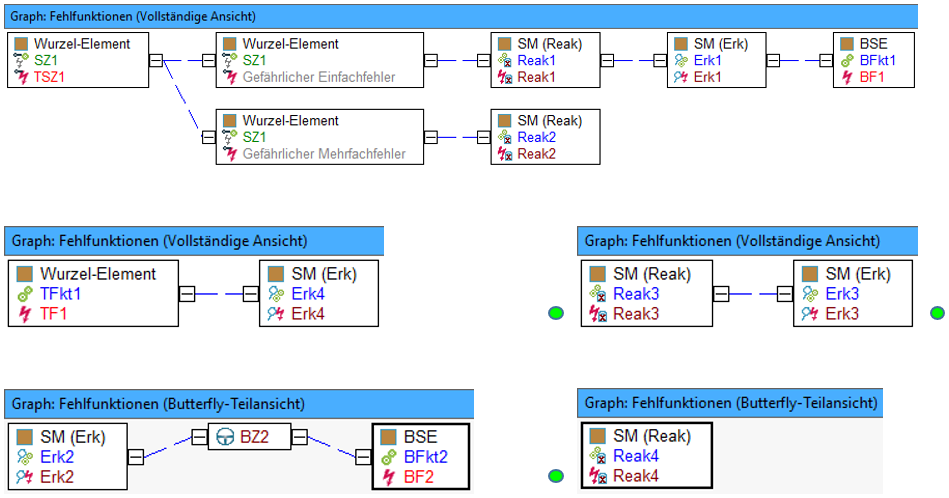Search for:
Safety mechanisms that are not linked to failures
Explanation:
Safety mechanisms (error detections and error responses) will be searched for that are neither directly nor indirectly and neither in the direction of causes nor in the direction of effects linked to a failure.
Example:
Abbreviations:

- The shown sample structure consists of four structure elements. A safety goal
 with violation of safety goal
with violation of safety goal  and a function plus a top failure are assigned to the root element. The system element BSE contains two functions with one base failure each. The other two structure elements SM (Det) and SM (Resp) each contains four safety mechanisms, with the error detections and the error responses being assigned to the corresponding structure elements respectively.
and a function plus a top failure are assigned to the root element. The system element BSE contains two functions with one base failure each. The other two structure elements SM (Det) and SM (Resp) each contains four safety mechanisms, with the error detections and the error responses being assigned to the corresponding structure elements respectively. - The following five failure graph figures show how the failures and the safety mechanisms of the structure shown above are interlinked.

- The considered Quality Rule (QR) detects such safety mechanisms (error detections and error responses) for that are neither directly nor indirectly and neither in the direction of causes nor in the direction of effects linked to a failure. An indirect link of a safety mechanism to a failure is given, if either another safety mechanism or an operating condition (OC) is located between the two IQ objects. A placeholder for single-point faults and multiple-point faults between safety mechanism and failure falls in the “indirect link” category too. In our example, all three forms of indirect links are available, namely at the safety mechanisms Resp1 and Det2.
Search result: 
Of the eight safety mechanisms available in the analyzed structure, only Det3, Resp3, and Resp4 are linked neither directly nor indirectly to a failure. That is why these three IQ objects are marked as hits.


